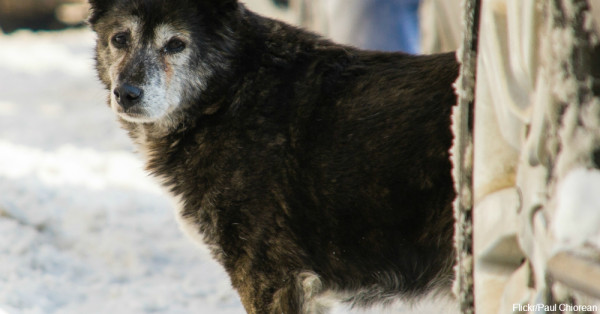
Found a Stray? What to Do and What Not to Do.
It’s a familiar scenario to many animal lovers: You come across a dog or cat that appears lost and frightened, and you want desperately to help, but you’re not sure how. Approaching a stray dog or cat can be tricky and even dangerous. Scared animals can be aggressive, especially if they are injured or sick. Even a small cat can inflict some nasty wounds if it feels cornered or trapped. So, how do you approach a stray and let it know you’re there to help and not hurt it? Here are a few tips from the experts about what to do and what to avoid.

How to Catch a Stray Dog
If you’re a dog lover, you probably assume that all dogs are friendly, and in most cases you would be right. Most dogs are gentle, loving creatures who view humans with affection and respect. But a stray dog is out of its element, and may be hungry, thirsty, or even hurt. So even if your first instinct is to approach it quickly so it doesn’t run away, take your time, and assess the dog’s behavior first.
One important rule when deciding how to handle these situations is to never approach an aggressive dog. Signs of potential aggression include fur that stands up along the back of the neck, bared teeth, ears tipped forward, and a tail that’s standing straight up, explains the American Society for the Prevention of Cruelty to Animals. The dog may stand in a stiff-legged position or crouch down as if it is getting ready to lunge. This body language may be accompanied by barking, snarling, growling, or snapping. Taken as a whole, these behaviors are a sign that the dog is warning you to stay away, so don’t approach. Try to contain the animal and call the police department or animal control for help.

If the dog seems scared but isn’t aggressive, try to get its attention in a calm, nonthreatening way. Petfinder suggests that you not look at the dog directly, and don’t call it to come to you. These actions can scare the dog and make it flee. Instead, act calm and disinterested. Lick your lips, yawn, or crouch down and pretend to be eating something you found on the ground. This should defuse the dog’s anxiety and may capture its interest if it thinks you have a treat.
Continue to approach the dog slowly and calmly, or let it come to you. If you have a leash or a piece of rope handy, put it on the dog as soon as possible, and then put the dog in a safe place, such as a garage or a fenced-in yard. Check for an ID tag. If the dog doesn’t have one, take it to your vet — they’ll be able to scan it for a microchip, which may lead you to the person who owns the dog.
If you can’t locate the dog’s owner, call your local animal shelter and file a “found dog” report. If no one claims the dog quickly, take it to the shelter, since that’s the first place most owners who have lost their dogs look. If you simply can’t bring yourself to leave the dog at the shelter, keep the dog in your home, and post fliers around the neighborhood. A lost dog can roam a long way, so cast a wide net. Put fliers in dog parks, shopping areas, and vet’s offices within a 2-mile radius of where you found the dog. Keep the description of the dog fairly general. Some unscrupulous people use “found dog” notices to look for pets to sell online or use in dog-fighting rings.
How to Capture a Stray Cat
Catching a stray cat usually takes a little bit more cunning and quite a bit more time than is needed to catch a dog. Most cats are naturally wary of strangers and tend to run or jump out of reach quickly if they are cornered or scared. At the same time, a stray cat is usually a hungry cat, so it may be possible to lure it close to you with food.

Sometimes the only way to convince a stray cat you are not going to harm it is to leave food outside for it for several days or more. As the cat becomes accustomed to being fed regularly, it should begin to come around on its own. After a while, it may allow you to approach it and pick it up. At that point, you can take it to your vet and have it scanned for a microchip. Hopefully, that will lead you to its owner and they can be reunited again.
Finding a stray animal can be a heartrending experience. Nonetheless, knowing what to do when you encounter a stray makes it far more likely that a lost pet will find its way back home. What’s more, you can help lost and frightened animals in other ways, too. For instance, you can provide a shelter animal with a free grooming and a professional photo to help it find a new forever home.
Help Rescue Animals
Provide food and vital supplies to shelter pets at The Animal Rescue Site for free! →